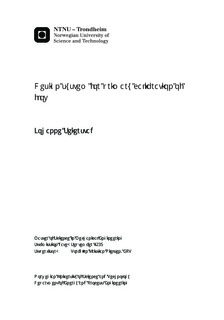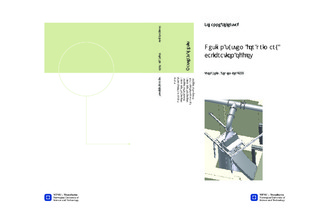| dc.description.abstract | Whilst growing demand for energy in Nepal and neighbouring- countries, investments in hydro- power projects appears continuously, both by local and multinational companies. As a consequence of this, Turbine Testing Lab was founded in 2011 at Kathmandu University in Nepal. The laboratory is rapidly developing, and is currently implementing a Francis turbine test rig. A long- term goal for the laboratory, is to execute model tests according to IEC 60193, which is the standard used in model tests of hydraulic runners.When determining the hydraulic efficiency of a runner, a central parameter is the discharge measurement. According to IEC, any secondary device used to measure the discharge shall be calibrated in sitù against one of the following primary methods: the weighing method, volumetric method or the moving- screen method.The aim of this work has been to develop and design a primary method for calibration of the flowmeter at TTL. Based on an evaluation of the mentioned primary methods, as well as economy, accuracy and correspondence with technical staff, a volumetric method is chosen as calibration principle. The principle of the method is based on collecting water into a tank with a known geometry, and by execution of level- and time measurements calculating the discharge.The calibration rig consists of a flowmeter, inlet nozzle, deflector mechanism, emergency weir, calibration tank, level measurement, time measurement, drainage system, emergency weir, and an upgraded pipe run at the measuring section of the flowmeter.It is developed a LabView program, for logging and processing the voltage output from the flowmeter. The other measurements executed is registered manually in a separate calibration sheet for data processing. An evaluation of the accuracy in the calibration method is conducted, which may be used to determine the total uncertainty when the calibration facility is installed. Provided design and installation according to ISO 8316, the accuracy in discharge measurement with the volumetric method lies within $\pm$ 0,1- 0,2 \%. The major uncertainty contribution in the method lies in the determination of the volume collected, and the corresponding tank calibration.It is proposed to reduce the diameter of the flowmeter from original size of 400 mm to 250 mm. Reduction in diameter and upgraded pipe run will increase accuracy of the flow measurement, a result of improved flow pattern at the measuring section. When the primary calibration rig is installed at TTL, this will be a large step towards an IEC- approved laboratory in Nepal, which open doors against an international market. | nb_NO |

